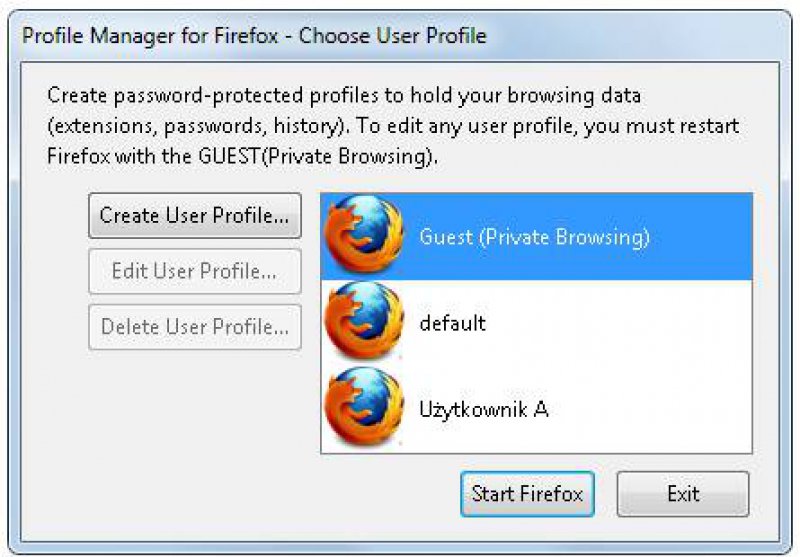

The Firefox Profile Manager (Choose User Profile) window should open. Alternatively, you can use -ProfileManager instead of -P.

Click the Firefox menu at the top of the screen and select Quit Firefox. If Firefox is open, close Firefox: Click the Firefox menu and select Exit.If Firefox is already included in your Linux distribution or if you have installed Firefox with the package manager of your Linux distribution: Note: You may need to adjust these instructions if Firefox is installed in a non-default location (for example, when multiple installations exist). Start the Profile Manager when Firefox is closed Launch profile in new browser When you click this, another Firefox window will open using that profile.Click this to make Firefox use this profile by default at startup. Set as default profile This option allows you to switch profiles.See the Removing a profile section below for more information. (The profile in use cannot be deleted.) Don't Delete Files is the preferred option. Remove Click this to delete a profile.Note: This does not rename the folder containing the files for the profile. Rename Click this to change the name of a profile in the Profile Manager.To manage profiles, find the profile you want to change and choose from these buttons underneath that profile: The new profile will become the default and will be used the next time you start Firefox. After you finish creating the new profile, it will be listed in the Profile Manager. Create a New Profile Click this and follow the prompts in the Create Profile Wizard (see the Creating a profile section below for details).The About Profiles page includes the following options: The Local Directory stores the disk cache and other temporary data. Note: The Root Directory stores user profile data such as bookmarks, passwords and preference settings.


 0 kommentar(er)
0 kommentar(er)
